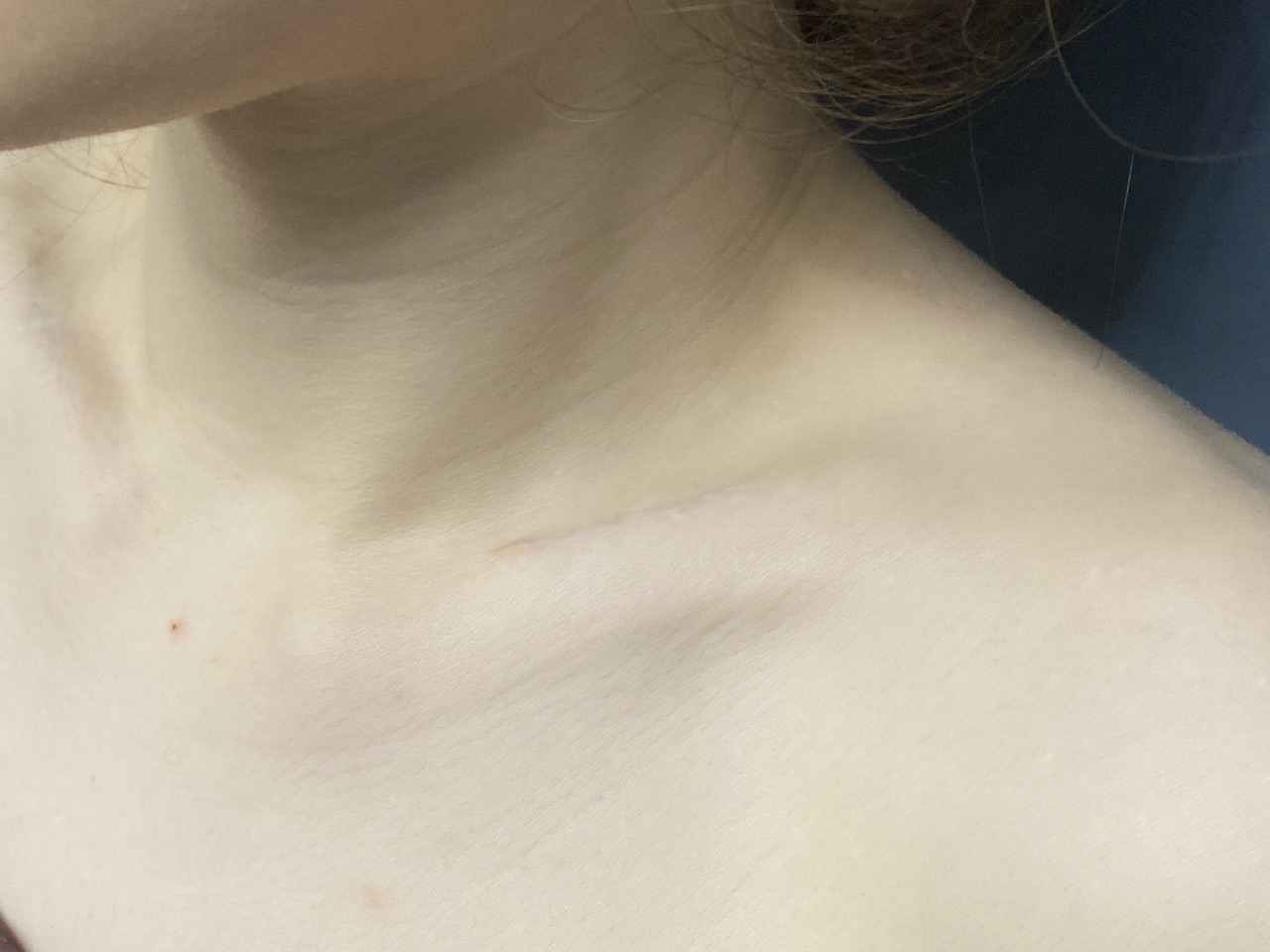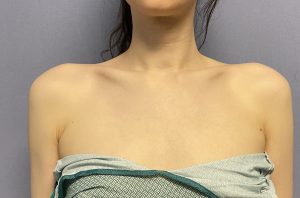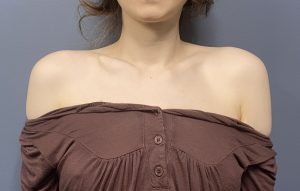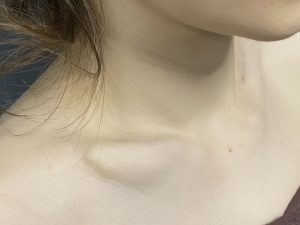Background: The immediate success of shoulder reduction is one of a consistent improvement that patients see as a good aesthetic improvement. Such a reductive shoulder shape change is seen immediately after surgery and is not affected by postoperative swelling which is at the inner half of the clavicle. This makes clavicle reduction surgery unique in that where the surgery is done is not where the aesthetic effect is desired.
The intermediate determination of clavicle reduction success is healing of the osteotomy site. This is in theory complete at 2 to 3 months after surgery although complete bony consolidation probably occurs a few months later. But as long as the fixation remains secure and non-displaced full bony healing is 99% assured.
The long term outcome of shoulder reduction surgery is based on how well the incisional scar heals and does the fixation hardware appear too visible.
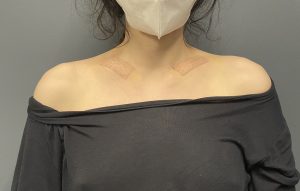
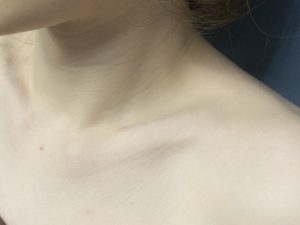
As an aesthetic procedure shoulder reduction is more than just how it affects the outer shoulder shape. The tradeoffs of the incisional scar and the use of the fixation hardware must also be considered. While an incision in a very visible area must be done most patient’s outcomes are like this patient. It can be seen when looked for but acceptable.Most patients do not seek a subsequent scar revision. Hardware show is always a potential issue long term as the tissues shrink down tightly around the clavicle months after the surgery. Since the plate creates an additional 3.5mms of clavicle height (about a 20% increaser) this added thickness can usually be seen particularly in thin patients. Whether it just looks like thicker clavicles or appears as an actual plate with scalloping and holes is the long term question.
Key Points:
1) The pertinent aspects of long term evaluation of shoulder reduction is the appearance of the scar and whether significant hardware show has occurred.
2) The clavicle hardware always thickens the appearance of the collarbones but may not appear as fixation hardware.
3) There will always be a slight scar appearance but one that is usually acceptable.
Dr. Barry Eppley
World-Renowned Plastic Surgeon

